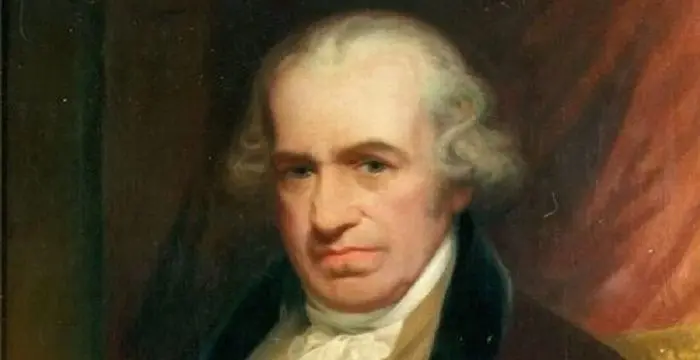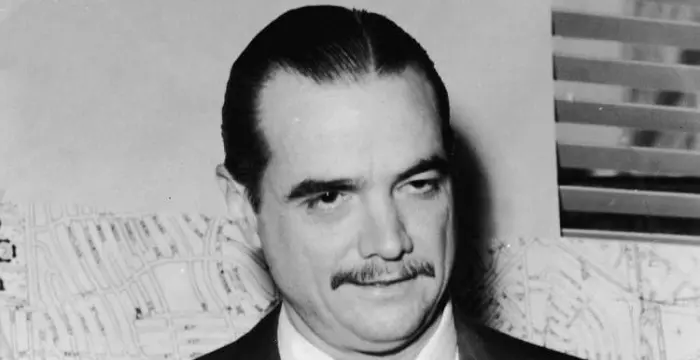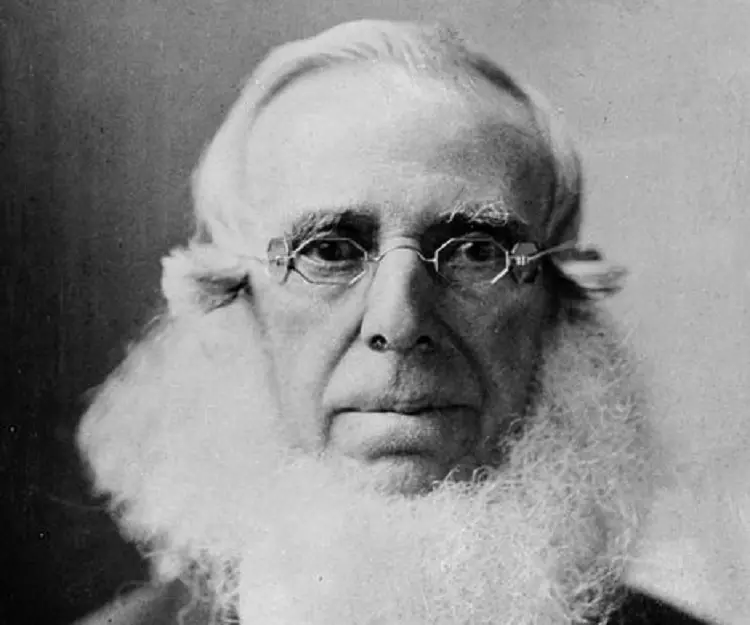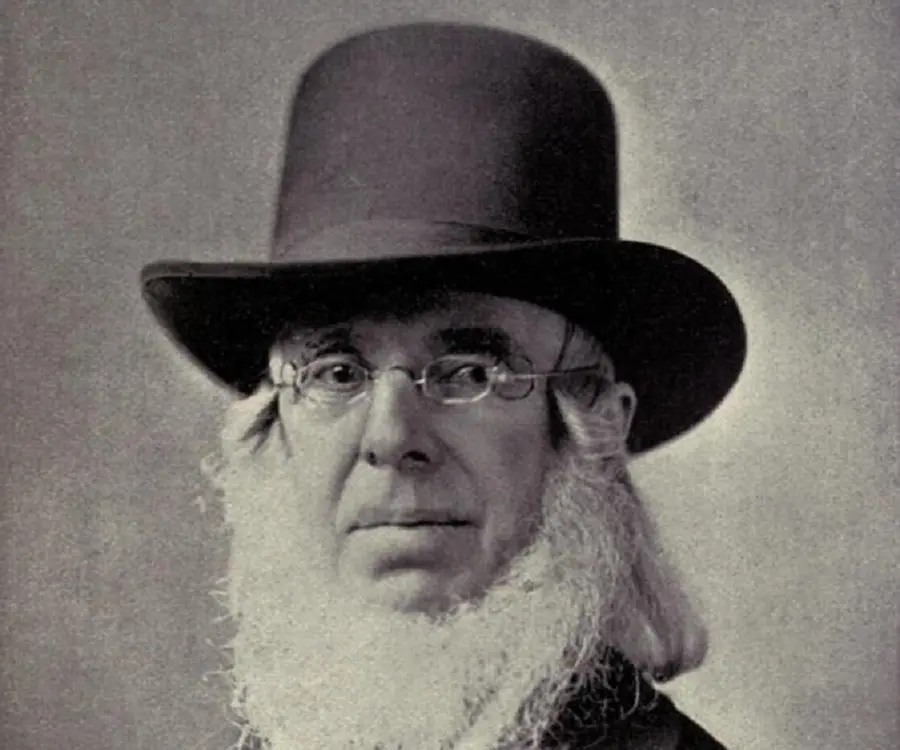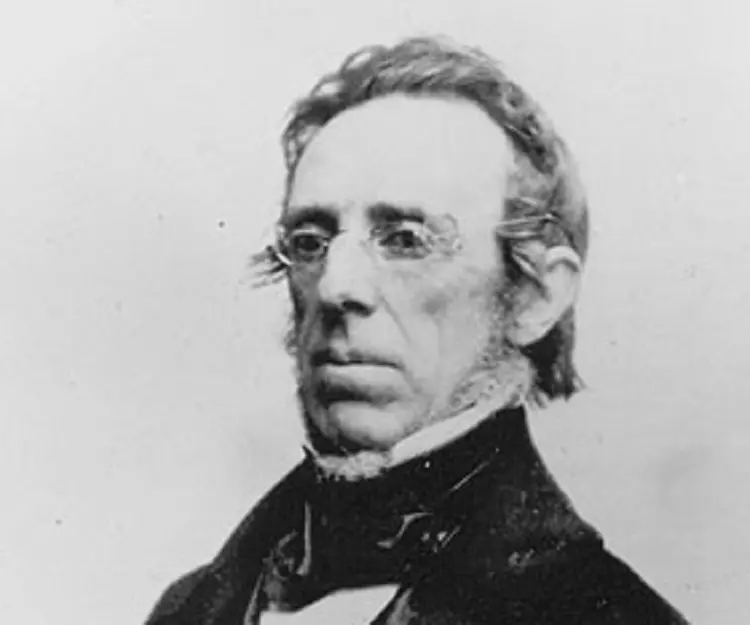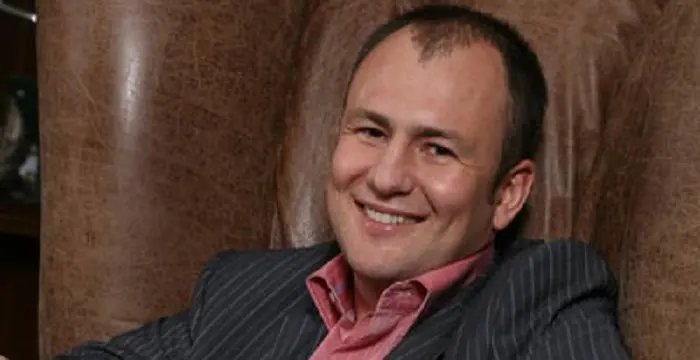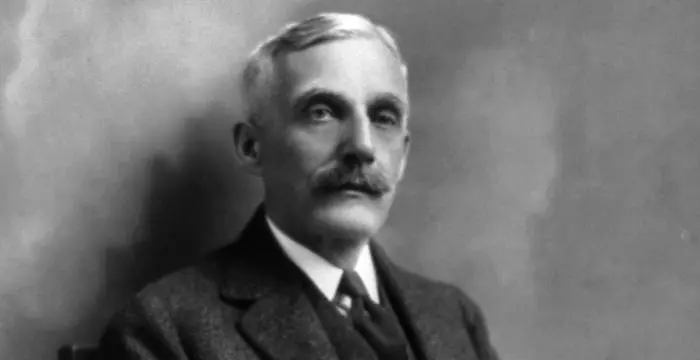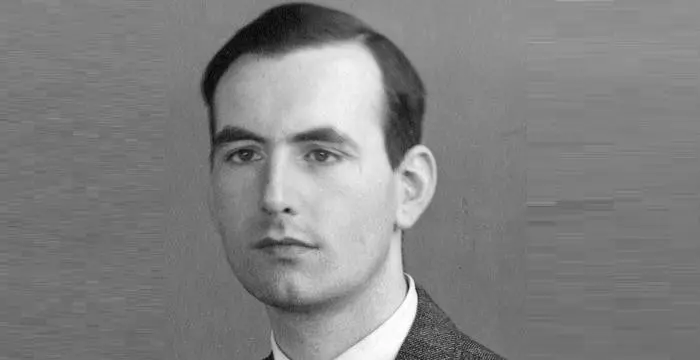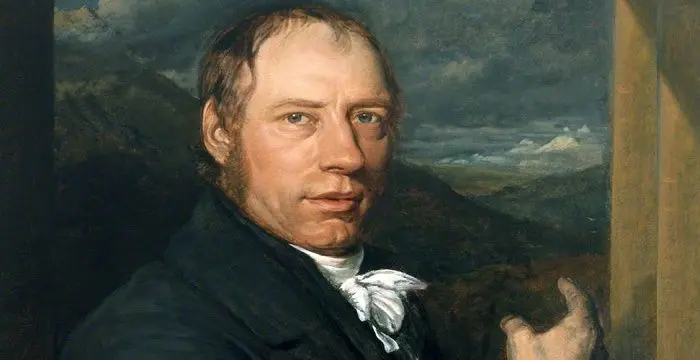
Peter Cooper - Industrialist, Birthday and Childhood
Peter Cooper's Personal Details
Peter Cooper was an American industrialist and inventor who built the first steam locomotive in the U.S
| Information | Detail |
|---|---|
| Birthday | February 12, 1791 |
| Died on | April 4, 1883 |
| Nationality | American |
| Famous | Philanthropists, Business People, Inventors & Discoverers, Industrialist, Inventors |
| Known as | Купер, Питер |
| Childrens | Edward Cooper, Sarah Amelia Cooper |
| Founder / Co-Founder |
|
| Birth Place | New York City |
| Gender | Male |
| Sun Sign | Aquarius |
| Born in | New York City |
| Famous as | Industrialist & Inventors |
| Died at Age | 92 |
// Famous Inventors
Thomas Newcomen
Thomas Newcomen was a British inventor who developed the world’s first steam engine. Browse through this biography to learn in details about his life, career, works and timeline.
Erno Rubik
The famous inventor and educationist, Erno Rubik is known world-wide for his invention the ‘Rubik’s Cube’. To know more about the childhood, profile, timeline and career of this famous architect-inventor read on.
Howard Hughes
Howard Hughes was an American aviator, business tycoon, philanthropist and also a film maker. This biography explores his childhood, career, achievements and timeline.
Peter Cooper's photo
Who is Peter Cooper?
Peter Cooper was an American industrialist and inventor who designed and built the first steam locomotive in the U.S. He was also the founder of the Cooper Union for the Advancement of Science and Art in Manhattan, New York City. A multi-faceted personality, he also ran for the 1876 presidential election as a member of the Greenback Party. The son of a Revolutionary War army officer, Cooper engaged himself in several trades as a young man; he had worked as a coach maker's apprentice, cabinet maker, hatmaker, brewer and grocer. Being exposed to different trades provided him with valuable experiences that would help him later in his career as an industrialist. A bright and curious youth, he loved tinkering and creating new gadgets. A cloth-shearing machine and an endless chain were among his early inventions. He started a business selling his cloth-shearing machines but it was not much successful. Soon, he ventured into glue making and established himself as a prosperous businessman. After a few years he discovered iron ore on his property and founded the Canton Iron Works. This laid the foundation for his most glorious achievement—the designing and building of the Tom Thumb steam locomotive—for which he achieved worldwide acclaim. Cooper also had a strong interest in adult education and founded the Cooper Union for the Advancement of Science and Art in Manhattan which offered courses to both men and women
// Famous Industrialist
Andrey Melnichenko
Andrey Melnichenko is a Russian industrialist and philanthropist. Check out this biography to know about his childhood, family life, achievements and fun facts about his life.
Andrew Carnegie
Andrew Carnegie was a famous businessman and philanthropist and one of the richest men in the history of the world. This biography profiles his childhood, life, career, achievements, philanthropy and timeline.
Andrew William Mellon
Andrew Mellon was an American industrialist and philanthropist. This biography of Andrew Mellon provides detailed information about his childhood, life, achievements, works & timeline.
Childhood & Early Life
Peter Cooper was born on February 12, 1791, in New York City, New York, to John Cooper, a Methodist hatmaker, and his wife Margaret Campbell, as their fifth child. He was of Dutch, English and Huguenot descent.
He did not receive much formal education and spent much of his boyhood working with his father in various industrial settings. In the early 19th century vocational skills were considered more important than academic qualifications.
As a teenager, he became adept in the trades of hat-making, brewing and brick making among others. He was a quick learner with an unquenchable thirst for knowledge.
He was apprenticed to a coach maker in New York City when he was 17. He proved himself to be a hard worker and greatly impressed his master. By the end of his apprenticeship he was offered a loan to go into coach making on his own. However, the young Peter was interested in gaining experience in other trades as well.
Career
Peter Cooper was interested in being an entrepreneur from a young age and once his apprenticeship with the coach maker ended, he went into the business of manufacturing and selling cloth-shearing machines he had designed himself.
His business performed well during the period of the Second War of Independence in 1812. The profits, however, started declining once the war was over. He converted his facility into a furniture factory to stay in business, and eventually sold it off.
After engaging in a couple of other businesses, he purchased a glue factory on Sunfish Pond for $2,000 in Kips Bay, in 1821. There were several slaughterhouses nearby from where he could easily source raw materials for making glue and related products like gelatin and isinglass.
He became a highly successful industrialist and greatly expanded his business. Soon he garnered a large clientele comprising the city’s biggest tanners, manufacturers of paints, and dry-goods merchants. By 1828, he had transferred the control of the business to his son and son-in-law in order to explore newer ventures himself.
Cooper purchased 3,000 acres of land in Maryland in 1828 and began to develop it. He discovered the presence of iron ore on his property and sensed that he could build a successful business from this ore. He founded the Canton Iron Works in Baltimore to provide ore to the Baltimore and Ohio Railroad for making iron rails.
When the railroad company faced problems in designing a suitable engine to traverse the hilly and twisting roads, Cooper began working on designing a diminutive but powerful engine. He finally succeeded in putting together the Tom Thumb steam locomotive for them in 1830 which could pull a load of 40 persons at 10 miles an hour.
In 1836, he began operating an iron rolling mill in New York. This mill became the first one to successfully use anthracite coal to puddle iron. The mill proved to be extremely profitable and was later moved to Trenton, New Jersey on the Delaware River.
He also invested his money in real estate and insurance, and earned a lot of wealth from his businesses and investments. As a highly successful inventor, businessman and investor, he became one of the richest men in New York City.
Cooper, along with four other men formed the New York, Newfoundland and London Telegraph Company in 1854 and the American Telegraph Company the next year. As a result of his association with the American Telegraph Company, he supervised the laying of the first Transatlantic telegraph cable in 1858.
He had been active in the anti-slavery movement prior to the Civil War and was also involved in the Indian reform movement. He played a major role in the formation of the Board of Indian Commissioners in 1869 and sponsored Indian delegations to Washington, D.C., New York City, and other Eastern cities between 1870 and 1875.
He became a member of the Greenback Party and was encouraged to run in the 1876 presidential election with Samuel Fenton Cary as his running mate. He was 85 years old at the time of his nomination! The election was eventually won by Rutherford Birchard Hayes of the Republican Party.
Major Works
Peter Cooper is best remembered for designing and building the ‘Tom Thumb’, America’s first steam locomotive in 1830. It was a four-wheel locomotive with a vertical boiler and vertically mounted cylinders that drove the wheels on one of the axles with an engine fueled by anthracite coal.
Philanthropic Works
Cooper had a deep interest in adult education and conceived of the idea of having a free institute in New York. He established the Cooper Union for the Advancement of Science and Art in 1859 at the cost of $600,000. The institution offered night classes to both men and women, setting a precedent in promoting women’s education. Cooper also started a Women's School of Design, which offered daytime courses in engraving, lithography, painting on china and drawing.
Personal Life & Legacy
Peter Cooper married Sarah Bedell in 1813. The couple had six children but only two survived to adulthood. As an adult, his son Edward joined Cooper in his business ventures as did his daughter’s husband, Abram.
He lived a long life and died on April 4, 1883 at the age of 92.
// Famous Philanthropists
Kevin Costner
Kevin Costner is an American actor, director and singer who is best known for his portrayal of rugged individuals with complex emotions. This biography provides detailed information about his childhood, life, achievements, works & timeline
Stevie Nicks
Stevie Nicks is singer-songwriter rated among the 100 Greatest Singers of All Time by Rolling Stone Magazine. This biography of Stevie Nicks provides detailed information about her childhood, life, achievements, works & timeline.
Princess Ameerah Al-Taweel
Princess Ameerah Al-Taweel is a Saudi Arabian princess widely recognized for her philanthropy and activism. Check out this biography to know about her childhood, family, life history and achievements.
Peter Cooper biography timelines
- // 12th Feb 1791Peter Cooper was born on February 12, 1791, in New York City, New York, to John Cooper, a Methodist hatmaker, and his wife Margaret Campbell, as their fifth child. He was of Dutch, English and Huguenot descent.
- // 1812His business performed well during the period of the Second War of Independence in 1812. The profits, however, started declining once the war was over. He converted his facility into a furniture factory to stay in business, and eventually sold it off.
- // 1813Peter Cooper married Sarah Bedell in 1813. The couple had six children but only two survived to adulthood. As an adult, his son Edward joined Cooper in his business ventures as did his daughter’s husband, Abram.
- // 1821After engaging in a couple of other businesses, he purchased a glue factory on Sunfish Pond for $2,000 in Kips Bay, in 1821. There were several slaughterhouses nearby from where he could easily source raw materials for making glue and related products like gelatin and isinglass.
- // 1828He became a highly successful industrialist and greatly expanded his business. Soon he garnered a large clientele comprising the city’s biggest tanners, manufacturers of paints, and dry-goods merchants. By 1828, he had transferred the control of the business to his son and son-in-law in order to explore newer ventures himself.
- // 1828Cooper purchased 3,000 acres of land in Maryland in 1828 and began to develop it. He discovered the presence of iron ore on his property and sensed that he could build a successful business from this ore. He founded the Canton Iron Works in Baltimore to provide ore to the Baltimore and Ohio Railroad for making iron rails.
- // 1830When the railroad company faced problems in designing a suitable engine to traverse the hilly and twisting roads, Cooper began working on designing a diminutive but powerful engine. He finally succeeded in putting together the Tom Thumb steam locomotive for them in 1830 which could pull a load of 40 persons at 10 miles an hour.
- // 1830Peter Cooper is best remembered for designing and building the ‘Tom Thumb’, America’s first steam locomotive in 1830. It was a four-wheel locomotive with a vertical boiler and vertically mounted cylinders that drove the wheels on one of the axles with an engine fueled by anthracite coal.
- // 1836In 1836, he began operating an iron rolling mill in New York. This mill became the first one to successfully use anthracite coal to puddle iron. The mill proved to be extremely profitable and was later moved to Trenton, New Jersey on the Delaware River.
- // 1854 To 1858Cooper, along with four other men formed the New York, Newfoundland and London Telegraph Company in 1854 and the American Telegraph Company the next year. As a result of his association with the American Telegraph Company, he supervised the laying of the first Transatlantic telegraph cable in 1858.
- // 1859Cooper had a deep interest in adult education and conceived of the idea of having a free institute in New York. He established the Cooper Union for the Advancement of Science and Art in 1859 at the cost of $600,000. The institution offered night classes to both men and women, setting a precedent in promoting women’s education. Cooper also started a Women's School of Design, which offered daytime courses in engraving, lithography, painting on china and drawing.
- // 1876He became a member of the Greenback Party and was encouraged to run in the 1876 presidential election with Samuel Fenton Cary as his running mate. He was 85 years old at the time of his nomination! The election was eventually won by Rutherford Birchard Hayes of the Republican Party.
- // 4th Apr 1883He lived a long life and died on April 4, 1883 at the age of 92.
// Famous Inventors & Discoverers
Nikola Tesla
Nikola Tesla was a Serbian-American inventor, best known for his development of alternating current electrical systems. This biography of Nikola Tesla provides detailed information about his childhood, life, achievements, works & timeline.
Thomas Newcomen
Thomas Newcomen was a British inventor who developed the world’s first steam engine. Browse through this biography to learn in details about his life, career, works and timeline.
Erno Rubik
The famous inventor and educationist, Erno Rubik is known world-wide for his invention the ‘Rubik’s Cube’. To know more about the childhood, profile, timeline and career of this famous architect-inventor read on.
Ernst Ruska
Ernst Ruska was a German physicist who invented the electron microscope. Check out this biography to know about his childhood, life, achievements, works & timeline.
Howard Hughes
Howard Hughes was an American aviator, business tycoon, philanthropist and also a film maker. This biography explores his childhood, career, achievements and timeline.
Richard Trevithick
Richard Trevithick was a British inventor who was the pioneer of steam-powered road and rail transport. Check out this biography to know about his childhood, family life, achievements and fun facts about him.
Peter Cooper's FAQ
What is Peter Cooper birthday?
Peter Cooper was born at 1791-02-12
When was Peter Cooper died?
Peter Cooper was died at 1883-04-04
Which age was Peter Cooper died?
Peter Cooper was died at age 92
Where is Peter Cooper's birth place?
Peter Cooper was born in New York City
What is Peter Cooper nationalities?
Peter Cooper's nationalities is American
Who is Peter Cooper childrens?
Peter Cooper's childrens is Edward Cooper, Sarah Amelia Cooper
Which company or organization was founded by Peter Cooper?
Peter Cooper was the founder/co-founder of Cooper Union
What is Peter Cooper's sun sign?
Peter Cooper is Aquarius
How famous is Peter Cooper?
Peter Cooper is famouse as Industrialist & Inventors
